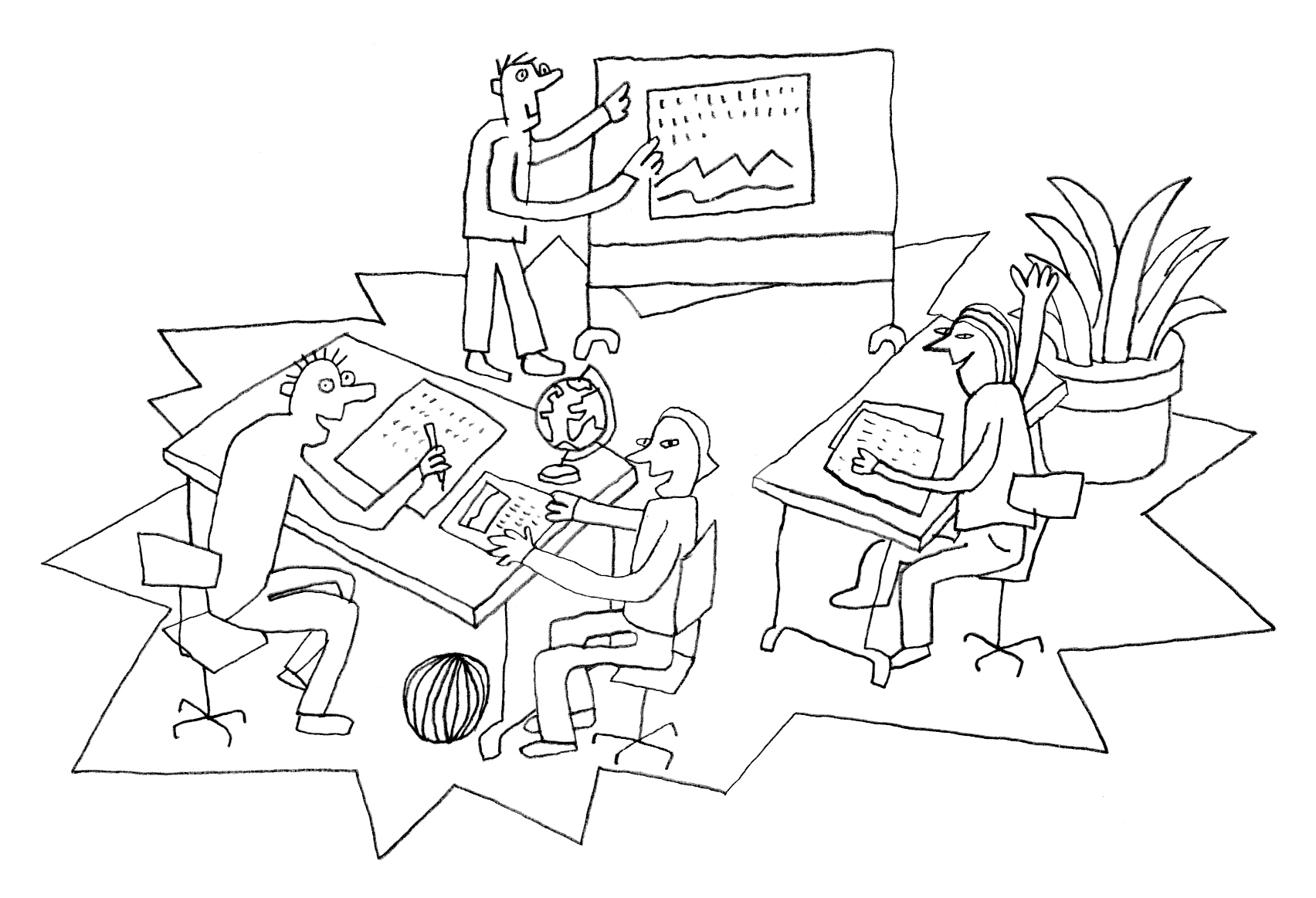Chapter 1 – Building up classroom atmosphere
Living Democracy » Textbooks » Chapter 1 – Building up classroom atmosphereIntroduction
The picture shows students working in the classroom. To the left, a boy and a girl are working together, their materials, including a globe, on the table. They seem to be engaged in discussion. In the background, a Student or perhaps a teacher is giving a presentation. The girl to the right has her hand raised waiting to be called. Everyone in class is working hard and seems to be enjoying it. Classroom atmosphere is crucial for effective work and learning.
These five exercises focus on how to create, or restore, an atmosphere in class that allows students to feel comfortable and safe. This basic requirement supports efficiency of teaching and learning, as disruptions invariably take priority and consume time and energy.
EDC/HRE has much in common with good teaching. This does not only apply to these five modeis, but to all the exercises in this book.
These modeis have not, however, primarily been conceived as tools of class management; they carry a deeper, more meaningful message. Educational reform today is, to a considerable extent, an issue of how to move forward from delivering a fixed, seemingly timeless set of knowledge and insights towards a more dynamic concept of lifelong learning that requires competence building rather than the accumulation of facts and figures. From this perspective, school is conceived as a micro-society – a place where students encounter experiences and problems that have much in common with adult life. Students should therefore learn how to deal with such problems in school. These exercises help students to make their micro-society work by getting to know others, agreeing on rules within a group, sharing personal experience with others and building self-esteem, defining one’s own identity within a group and co-operating with others. These tasks are equally important and suitable for young and older students, but the level of reflection will vary.
Finally, in terms of EDC/HRE, these exercises carry a clear message of teaching through or in the spirit of democracy and human rights. Each student is an individual who contributes something personal and special to the Community of students and teachers in class. Each student should be treated with interest and respect. Every rule should be applied equally to everyone. This means: “What I expect from others they may expect from me.” The students should be made aware of this message, so reflection and critical thinking in class are essential.
- Exercise 1.1. - Matching cards
Educational objective This exercise enables students to make contactwith others in a non-threatening way. Note on use Teachers can use this exercise...
- Exercise 1.2. - Rights, responsibilities and rules in the classroom
Educational objectives This activity introduces a “step-by-step” approach to use with students in order to establish democratically agreed rules for their class...
- Exercise 1.3. - Identity coat of arms
Educational objectives Enhancement of self-esteem; individuals are encouraged to recognise and celebrate positive aspects of themselves. Groups find their common goals. Note...
- Exercise 1.4. - A bouquet of flowers
Educational objectives The objective of the exercise is to support group cohesion and enhance self-esteem. The students appreciate that individuals in a...
- Exercise 1.5. - Chinese sticks
Educational objective The students are trained in the skills of team players. They experience what it means to have to depend on...


